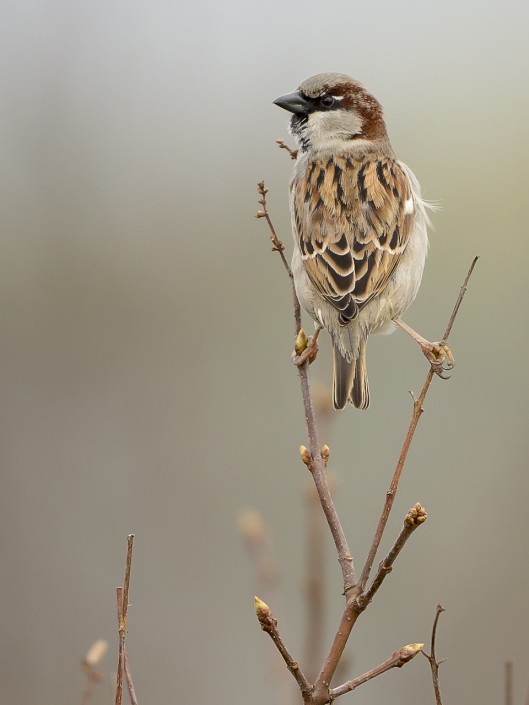This post is also available in: Swedish
House sparrow – Passer domesticus
House sparrow – Passer domesticus
is a bird of the sparrow family Passeridae, found in most parts of the world. Females and young birds are coloured pale brown and grey, and males have brighter black, white, and brown markings. One of about 25 species in the genus Passer, the house sparrow is native to most of Europe, the Mediterranean region, and much of Asia. Its intentional or accidental introductions to many regions, including parts of Australia, Africa, and the Americas, make it the most widely distributed wild bird.
The house sparrow is strongly associated with human habitations, and can live in urban or rural settings. Though found in widely varied habitats and climates, it typically avoids extensive woodlands, grasslands, and deserts away from human development. It feeds mostly on the seeds of grains and weeds, but it is an opportunistic eater and commonly eats insects and many other foods. Its predators include domestic cats, hawks, owls, and many other predatory birds and mammals.
The house sparrow can be confused with a number of other seed-eating birds, especially its relatives in the genus Passer. Many of these relatives are smaller, with an appearance that is neater or “cuter”, as with the Dead Sea sparrow. The dull-coloured female can often not be distinguished from other females, and is nearly identical to the those of the Spanish and Italian sparrows. The Eurasian tree sparrow is smaller and more slender with a chestnut crown and a black patch on each cheek. The male Spanish sparrow and Italian sparrow are distinguished by their chestnut crowns. The Sind sparrow is very similar but smaller, with less black on the male’s throat and a distinct pale supercilium on the female.
It sounds like this
Recording by Guido O. Keijl from Xeno canto










